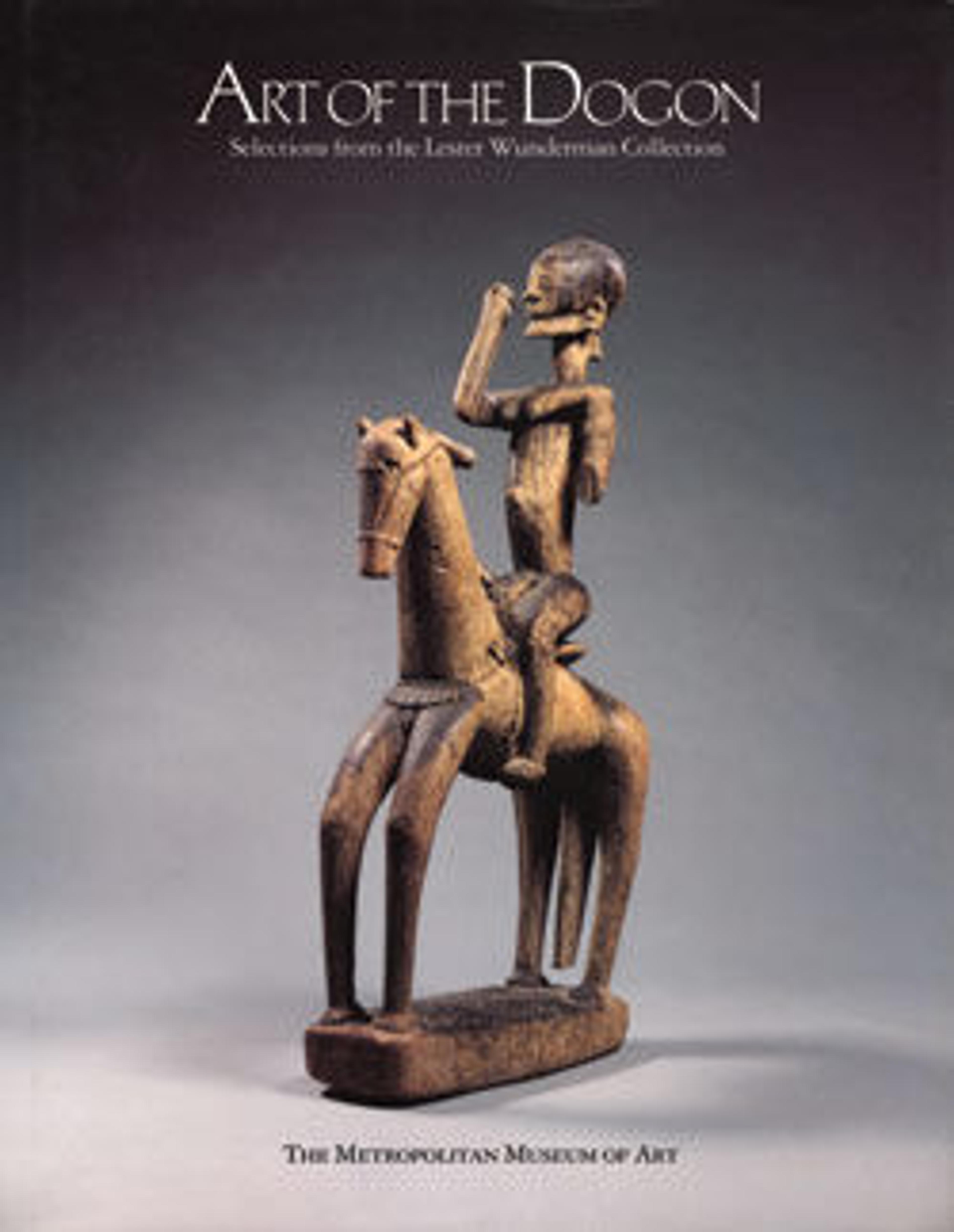Imina kanaga (kanaga masquerade vest)
In Dogon society, imina (masks) refer not only to the face coverings, but also to the costumes and the performance. The materials used to make these elaborate ensembles hold deep cosmological significance—the hibiscus plant from which the fibers are extracted grew where a primordial woman named Yasigi is said to have impregnated the earth. Its red and yellow fibers, essential materials that imbue the mask with nyama (life force) and pangan (power), remain closely associated with the reproductive capacities of women. However, as the power generated by Yasigi’s act was considered too dangerous for women to handle, only men may harvest and fashion masks from these plants.
Artwork Details
- Title:Imina kanaga (kanaga masquerade vest)
- Artist:Dogon artist
- Date:early 1970s
- Geography:Mali
- Culture:Dogon peoples
- Medium:Cotton, dye, cowrie shells, plastic, glass, metal
- Dimensions:H. 18 x W. 27 in. (45.7 x 68.6 cm)
- Classification:Textiles-Beadwork
- Credit Line:Gift of Lester Wunderman, 1987
- Object Number:1987.74a
- Curatorial Department: The Michael C. Rockefeller Wing
More Artwork
Research Resources
The Met provides unparalleled resources for research and welcomes an international community of students and scholars. The Met's Open Access API is where creators and researchers can connect to the The Met collection. Open Access data and public domain images are available for unrestricted commercial and noncommercial use without permission or fee.
To request images under copyright and other restrictions, please use this Image Request form.
Feedback
We continue to research and examine historical and cultural context for objects in The Met collection. If you have comments or questions about this object record, please contact us using the form below. The Museum looks forward to receiving your comments.
